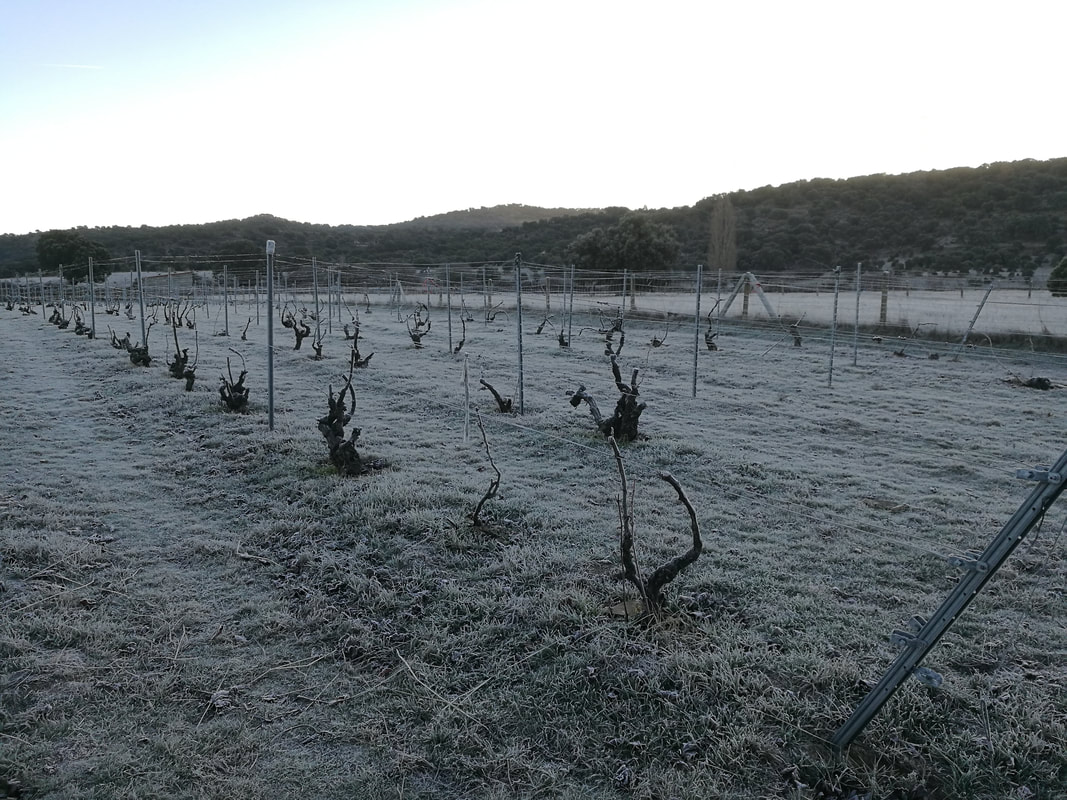I would like to start by talking about conventional wisdom on Phylloxera. The reason for that is that our vineyard and others in the area are being slowly but surely devastated by Phylloxera. You can see this in the picture above. These vines are 30-40 years old, every single space was originally planted with vines. Today you can see the empty spaces where vines were planted and have now dissappeared in the right side of the picture.
What is Phylloxera? Daktulosphaira Vitifoliae is an insect which caused devastation in the XIX century by killing most vineyards in Europe. If you want to know more about where it came from please visit the Wikipedia page:
en.wikipedia.org/wiki/Phylloxera
Conventional wisdom relies on grafting the European species into American roots which are resistant to Phylloxera. In our case some of the original vines were propagated by layering, i.e: planting the European vine ungrafted. This creates a problem as if these vines are not untreated, the Phylloxera insect will feed on them and slowly but surely kill them. There are a few rare vineyards untouched by Phylloxera however. These wines generally (although not always) demand a premium as they are certainly exclusive and rare.
The main effects of Phylloxera on vines are as follows:
1.- Phylloxera feeds from the vine roots taking the sap and slowly browning the trunks and branches until they eventually kill the plant. This process slowly weakens the plant and kills it slowly. This can take several years depending on the age/size of the vine, in our vineyard it can take from one to 3-5 years...
2.- Phylloxera also feeds on the leaves. As part of its reproductive cycle, the winged insect lays eggs under the vine leaves. As above, the vine fights the infestation and is weakened. Additionally the eggs feed on the leaf sap, then hatch and more phylloxera develop.
3.- Sap is taken from the roots, sap is taken from the leaves, the vine is weakened. Like when we get the flu, the vine plant immune system is compromised, it uses its limited resources to fight the infection.
A very grim situation for winemaking, it is fair to say that the premium on Phylloxera-free/ungrafted wines in my humble opinion is more than justified. Remember walking around the vineyard a few years ago, unaware of what was going on and feeling miserable that the plants were looking distressed. Did not know what was going on, how could i help or even what the galls in the leaves were. The biodynamic treatment did not have the answer, or at least it is not widely known or within their toolkit yet.
On the positive side and after a couple of years of research, it is a pleasure to walk around the vineyard today. We are slowly but surely wining the battle against Phylloxera. Most of the affected vines seem to be coming back and surviving. Have planted vines on their roots, knowing that they will now survive ungrafted. Will go through the evident changes to the plants on the next post.
We have many challenges on wine making, yet we are improving every year. We might be miles away from producing excellent wines, yet we can see the light at the end of the tunnel.
Thank you to Rudolf Steiner who might not have had the right answers and is always right. Thank you to Hilario Garcia who has obviously worked this it out. Both are an inspiration to many and more importantly a starting point to what´s to come in the future. Thanks a million both for giving us the courage, the knowledge and above all inspiration.


 RSS Feed
RSS Feed
